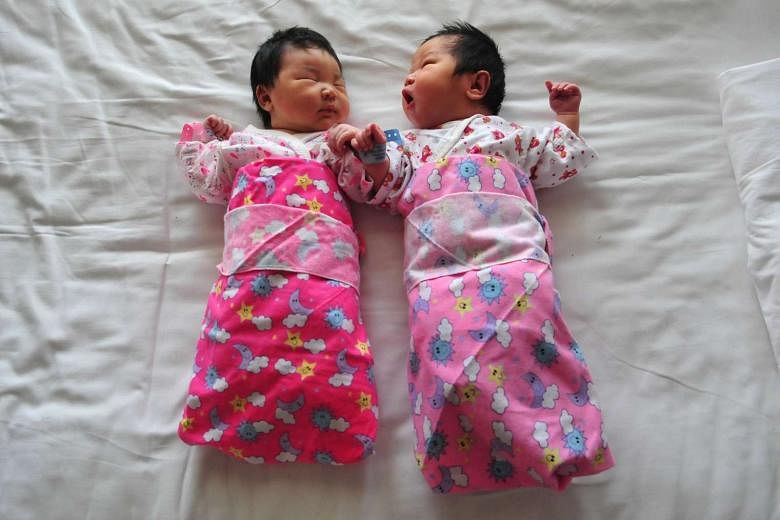BEIJING (AFP) - China's ruling Communist Party announced on Thursday (Oct 29) it would roll back the country's infamous one-child policy to allow all couples two children, state media reported. Here are some key facts about the controversial law.
1. Why was the one-child policy enacted?
China's family planning law, which limited many couples to having one child only, was formally implemented in the late 1970s as a means of controlling its population, the world's largest.
Authorities say that avoiding overpopulation has helped speed China's rapid economic development since then.
2. How did it work?
At first the rule was one child for all couples.
Later on, regulations began to vary and loosen in different parts of the country. In recent years urban couples have generally been allowed only one child, but two if both parents were only children themselves.
Rural families were allowed two if the first was a girl, while ethnic minorities were allowed an extra offspring, leading some to dub it a "one and a half child" policy.
The policy was long enforced by China's family planning commission, now merged with the health ministry, whose hundreds of thousands of personnel rely on permits, fines and, in some cases, forced sterilisation and late-term abortions.
One of the criteria for officials' promotions has been success in implementing the policy.
Forced abortions remain widespread, according to rights groups, especially for unmarried women or for couples under the legal marrying age of 22 for men and 20 for women.
3. What were its effects?
The government argues that the policy has prevented about 400 million births, keeping the nation's population at roughly 1.37 billion today.
But it also led to sex-selective abortions or infanticide targeting girls, because of a centuries-old social preference for boys.
Families also became lopsided, with one single child caring for four grandparents and two parents, a significant financial burden for many.
Couples whose only child died as an adult, too late for them to have another, were particularly hard hit.
4. Was Thursday's change expected?
China announced an earlier loosening of the policy in 2013, allowing couples where only one was an only child to have a second offspring.
Many experts predicted the government would soon be forced to loosen the policy in the face of an ageing population, shrinking workforce and stagnant birth rate.
5. What happens now?
China's various provinces and regions will be responsible for implementing changes at the local level, but there was no immediate timetable announced on Thursday.
6. Is a baby boom coming?
Previous instances when the policy was loosened did not lead to major birth explosions, with the 2013 reform a particular example.
The latest change applies to far more couples, but raising children is becoming more expensive and in recent years more couples have chosen to forego children altogether.

